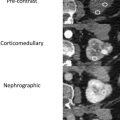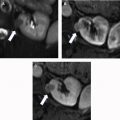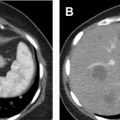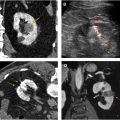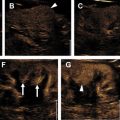Moderate and severe contrast reactions are rare but can be life threatening. Appropriate contrast reaction management is necessary for the best patient outcome. This review summarizes the types and incidences of adverse events to contrast media, treatment algorithms, and equipment needed to treat common contrast reactions, the current status of contrast reaction management training, and preventative strategies to help mitigate adverse contrast events.
Key points
- •
Moderate and severe hypersensitivity reactions to iodinated contrast media and gadolinium-based contrast agents are rare but can be life threatening.
- •
Frequent training augmenting didactic lectures with hands-on or computer-based simulation, or educational online modules can improve knowledge and comfort at managing contrast reactions.
- •
Epinephrine administration errors are common and may be reduced by having autoinjectors available. However, frequent hands-on training is still required to ensure appropriate use.
- •
Treatment algorithms, visual aids, and safety checklists should be posted throughout radiology departments to improve team comfort at managing reactions and reduce errors.
- •
Appropriate screening may reduce the risk for hypersensitivity reactions and extravasations, although break-through reactions may still occur, usually of similar severity.
Introduction
Radiographic contrast agents, such as iodinated contrast media (ICM) and gadolinium-based contrast agents (GBCA), are useful for evaluating organs and identifying pathologic conditions. Their utilization has rapidly increased in the past few decades with approximately 48 million contrast-enhanced computed tomographic scans (CTs) and 17 million contrast-enhanced MR images performed annually in the United States. However, adverse events, such as hypersensitivity reactions and extravasations can occur, and the radiology department’s readiness to appropriately manage these will affect the patient’s outcome. The rarity of moderate and severe reactions results in few radiologists having first-hand experience at managing reactions. Published survey data suggest that radiologists have knowledge gaps in appropriate contrast reaction management, particularly anaphylaxis. Bartlett and Bynevelt found that 57% of their respondents either did not know or gave incorrect dosing for the administration of epinephrine, which was more likely overdose (66%) versus underdose (33%). More recently, Nandwana and colleagues surveyed radiology attendings, residents, fellows, and nurses, and only 29% of respondents correctly answered the rate, dose, and route of epinephrine administration for anaphylaxis. Several recent studies have used hands-on simulation contrast reaction scenarios as a surrogate to evaluate the incidence of treatment errors and have confirmed a high rate of management errors. This review summarizes the types and incidence of adverse events to contrast media, treatment algorithms, and equipment needed to treat common contrast reactions, the current status of contrast reaction management training, and preventative strategies to help mitigate adverse contrast events. The scope of this review is limited to adult patients.
Review of the types and incidence of adverse events
Hypersensitivity Reactions
The incidence of hypersensitivity, including both allergic and allergic-like reactions to low osmolar (LOCM) and iso-osmolar (IOCM) ICM, ranges from 0.2% to 0.6%: 0.4% to 0.5% mild, 0.04% to 0.1% moderate, 0.006% to 0.01% severe. , , Death is extremely rare and estimated to be approximately 0.0006%. The incidence of reactions is lower with GBCAs and estimated to be 0.08% to 0.2%: 0.02% to 0.1% mild, 0.01% to 0.02% moderate, and 0.006% to 0.0007% severe. , , The mortality owing to GBCA reported to the Food and Drug Administration was 0.00008% between 2004 and 2009. Some data suggest that the risk of adverse events is higher in ionic linear agents than in nonionic linear GBCA agents. ,
Hypersensitivity reactions are now classified into acute and nonacute/delayed reactions. The acute or immediate reactions occur within 1 hour after contrast administration, and many are caused by mast cell activation that may or may not be caused by immunoglobulin E mechanisms, explaining why the term allergic-like reactions was previously used. , These reactions range from mild hives to anaphylaxis and are classified by their severity and morbidity by the American College of Radiology (ACR), as seen in Table 1 .
| Mild | Moderate | Severe |
|---|---|---|
| Self-limited and no evidence of progression; treatment usually not necessary; no vital sign alterations Limited hives Limited itchiness Cutaneous edema Limited itchy/scratchy throat or eyes Nasal congestion/runny nose | Symptoms may require medical treatment; however no significant vital sign alterations Diffuse hives Diffuse itchiness or erythema, stable vital signs Facial edema but no dyspnea Wheezing but no hypoxia Throat tightness but no dyspnea | Symptoms may be life threatening and require treatment to avoid morbidity or death; vital signs are abnormal Diffuse hives with hypotension Diffuse itchiness and or erythema with hypotension Diffuse edema including facial with dyspnea Wheezing with hypoxia Laryngeal edema with stridor and or hypoxia Anaphylactic shock (hypotension + tachycardia) |
Delayed reactions are defined as reactions starting more than 1 hour after contrast administration but typically occurring more than 3 hours to 2 to 5 days after exposure and are suspected to be related to T-cell–mediated hypersensitivity. These delayed reactions usually manifest as macular or maculopapular exanthema but rarely can be associated with more severe skin conditions, such as toxic epidermal necrolysis or Stevens-Johnson syndrome. The exact incidence of delayed reactions is difficult to determine likely because of underreporting, but is estimated to be 0.5% to 9%. Loh and colleagues showed the most common delayed adverse reactions were cutaneous, such as rash, itching, skin redness, and swelling. Overall delayed reactions are commonly self-limited.
Extravasation
Contrast extravasation is another recognized adverse event related to contrast media injection and is rarely serious, although it can result in severe skin ulcerations, tissue necrosis, and compartment syndrome. A recent systematic review of MR and CT contrast media extravasations found 17 papers that reported 2191 extravasations out of 1,104,872 patients (0.2%) with a rate of 0.26% for ICM and 0.045% for GBCA. The rate of extravasations is lower with gadolinium likely related to the lower volumes, lower rates of injection, and increased frequency of hand injection.
Management of adverse events
Acute Hypersensitivity
Appropriate management for contrast reactions varies based on the type of reaction. As a result, it is vital to have an emergency cart stocked with various supplies and medications as well as appropriate training of staff to be able to manage reactions. The management of contrast reactions is not unique to the use of iodinated contrast, and the treatment is the same, regardless of the inciting factor. Although vasovagal reactions are considered a physiologic reaction and not allergic-like hypersensitivity reaction, it is included in the treatment flowchart for completeness. It is generally considered best practice to preserve intravenous (IV) access and monitor vital signs, including pulse oximetry for all reactions, including mild reactions. Fig. 1 provides a flowchart for managing bronchospasm versus laryngeal edema, and Fig. 2 provides a flowchart for managing vasovagal versus anaphylaxis.
- •
Hives/urticaria, itchiness, or diffuse erythema
- ○
Mild scattered or transient hives or erythema usually does not require treatment; however, vital signs should be monitored, and IV access preserved.
- ○
If the hives worsen or become more numerous/widespread or bothersome, treatment with diphenhydramine 25 to 50 mg orally or fexofenadine 180 mg orally (less sedating) could be considered.
- ○
If the hives or diffuse erythema are accompanied by hypotension:
- ▪
Give IV fluids normal saline 1 L bolus
- ▪
Elevate legs ≥60°
- ▪
Give oxygen by face mask (at least 6–10 L/min)
- ▪
Give epinephrine ( Table 2 )
Table 2
Various forms of epinephrine administration for hypersensitivity reactions
Route of Delivery
Concentration of Epinephrine
Dose, mg (mL Volume)
Intramuscular (IM) manual a
1 mg in 1 mL
0.3 (0.3 mL)
Intramuscular autoinjector a
1 mg in 1 mL
0.3 (prefilled)
IV b
1 mg in 10 mL
0.1 (1 mL)
a Inject into the lateral thigh.
b Inject slowly into an IV line with fluids running or followed by a slow flush.
- ▪
- ○
- •
Bronchospasm
- ○
Oxygen by mask, at least 6 to 10 L/min
- ○
Beta2 agonist inhaler 2 puffs (90 μg/puff) and can repeat up to 3 times total
- ○
In severe cases or if the bronchospasm is progressive or unresponsive to the inhaler, epinephrine (see Table 2 )
- ○
- •
Laryngeal edema
- ○
Oxygen by face mask, at least 6 to 10 L/min
- ○
Epinephrine (see Table 2 )
- ○
- •
Vasovagal
- ○
Elevate legs ≥60°
- ○
Give IV fluids normal saline 1 L bolus
- ○
Give oxygen by face mask 6 to 10 L/min
- ○
If the patient remains symptomatic, consider atropine 0.6 to 1 mg IV
- ○
- •
Anaphylaxis
- ○
Early initiation of the resuscitation team and/or calling 911 is critical
- ○
Assess airway and begin oxygen by face mask, 6 to 10 L/min
- ○
Elevate legs ≥60°
- ○
Give IV fluids normal saline 1 L bolus
- ○
Give epinephrine (see Table 2 )
- ○
- •
Delayed reaction
Management of cutaneous delayed reactions should be symptomatic with oral antihistamines and topical steroids and emollients. ,
- •
Extravasation
Management of this complication is controversial. Most cases of contrast extravasation occur with small volumes and are self-limiting, although larger volume can result in severe skin necrosis and ulceration.
- •
Verify estimated volume of extravasation and examine the patient.
- •
In most cases conservative management is enough.
- ○
Apply either ice packs or warm compresses
- ○
Elevate the limb
- ○
Check pulses and sensory function for neurovascular compromise
- ○
Monitor patient vital signs as well as site of extravasation
- ○
Can mark skin to determine size of involvement
- ○
- •
If symptoms worsen, consult a surgeon if concerned about compartment syndrome.
- •


Required equipment
Table 3 summarizes the suggested medications and supplies needed for managing contrast reactions. Please refer to your own radiology department’s contrast management policy for the minimum equipment and medications required because these may vary depending on institutional policies and practices.

